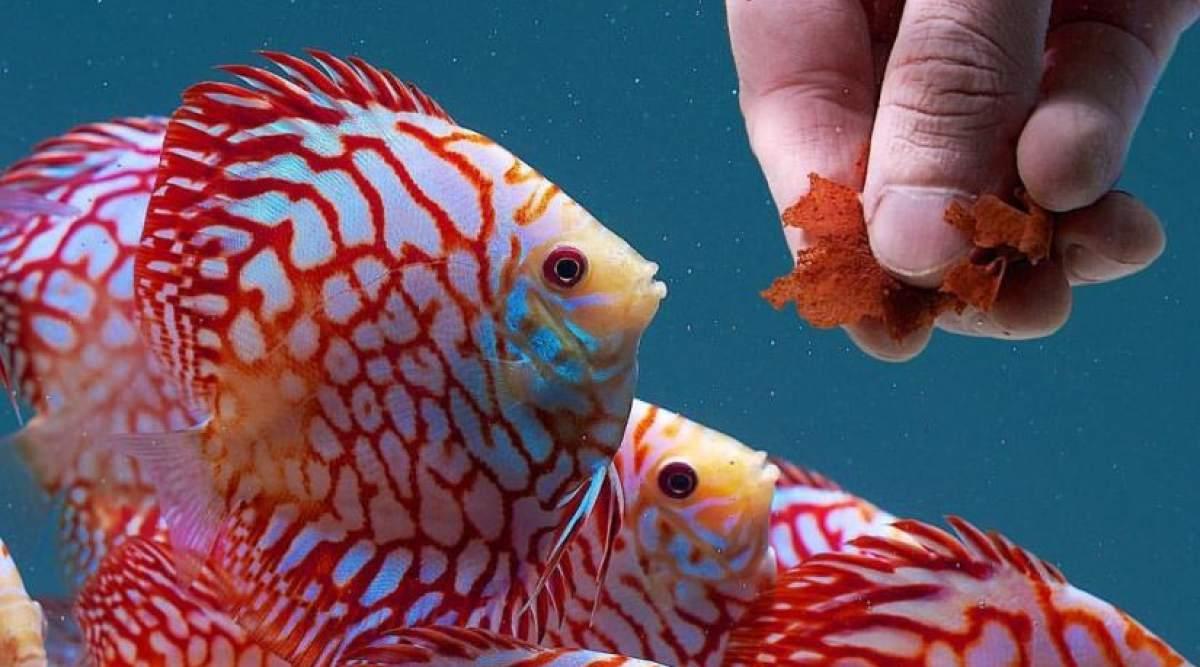Types of Ornamental Fish Feeds Available in the Market
There are multiple types of ornamental fish feeds available in the market catering to different nutritional requirements of various fish species. Some of the major types are as follows:
Flake Food: Flake food is one of the most popular and commonly used types of fish feed. It comes in small, dry, flaky pieces that float on the water surface. This allows fish to easily locate and consume them. Flake food provides a balanced mix of proteins, fats, vitamins and minerals needed by most freshwater ornamental fish.
Pellet Food: Pellet food comes in pellet or wafer form and often sinks in water unlike flake food. This makes it suitable for bottom-feeding fish and ensures the pellets don't spoil the water quality by floating at the surface for long. Pellets usually have higher nutrient content than flakes but the hard structure is not suitable for some varieties.
Live Food: Despite not being commercial feeds, live food like bloodworms, brine shrimp, tubifex worms, fruit flies and mosquito larvae serve as nutritional live food for fish. They stimulate natural foraging behaviour in fish and support healthy growth. However, live food requires proper culturing and is not practical for all aquarium conditions.
Frozen Food: Frozen food items like bloodworms, brine shrimp, tubifex worms, daphnia provide a convenient alternative to live food. They retain most nutritional value after freezing. Many carnivorous fish species strongly prefer live or frozen varieties over commercial feeds for their close resemblance to natural prey.
Specialized Food: Specialized feeds are tailored to meet individual nutrient requirements of specific fish species, ages or conditions. Examples include foods for fry, juvenile, breeding, amino acid-enhanced, vitamin-enriched, mineral-enriched varieties. These ensure omni-or carnivorous fish get a nutritionally balanced and complete diet.
Vegetable Food: Available for herbivorous or omnivorous fish species, vegetable-based food usually contains spirulina, seaweed, vegetables, algae and plant proteins. They complement the natural plant-eating diet of these fish like goldfish, mollies and angelfish.
Soaking and Preparing Fish Foods
Most commercial fish foods need proper soaking and preparation before feeding:
- Flake and pellet foods should be soaked for 2-5 minutes before feeding. This softens them and allows fish to easily consume without swallowing air.
- Larger pellet sizes meant for bigger fish shouldn't be crushed but fed after soaking to prevent bloating.
- Specialized foods like fry food may need crushing between fingers before soaking to attain an appropriate size.
- Quantity should be gauged as per fish appetite and tank biomass. Overfeeding leads to water pollution whereas underfeeding stunts growth.
- Vegetable and algae-based foods don't need soaking but should be fed after observing consumption of previous servings to avoid fouling water.
- Live and frozen foods must be fed in adequate numbers matching natural foraging behaviour and appetite of individual fish varieties.
Feeding Schedule for Ornamental Fish Feed
Proper feeding schedule aids overall fish health and balanced growth:
- Young and growing fish or those in community tanks may be fed 2-3 small meals per day.
- Adult fish in stable environments can be fed 1-2 times daily depending on tank conditions and water quality.
- Rest or fasting days once or twice a week allow fish to digest previous meals completely.
- Breeding pairs and fry require small, frequent feedings 4-6 times daily for initial growth stages.
- Water parameters influence appetite and intake. Higher temperatures increase metabolism needing adjusted rations.
- Natural feeding instincts and habits suit different fish. Schedules should factor these to keep fish healthy and colours vibrant.
- Quantity also matters. Overfeeding stresses organs, underfeeding stunts growth. Correct judging comes with practice and observing individual fish behavior.
With numerous feed varieties and formulation improvements, maintaining ornamental fish feed has become convenient without compromising their nutritional needs. Adhering to basic preparation and feeding guidelines contributes significantly towards their long, happy tank life. Regular monitoring and adjustments optimize their habitat further.
Enhancing Health and Growth: A Comprehensive Guide to Ornamental Fish Feeding

